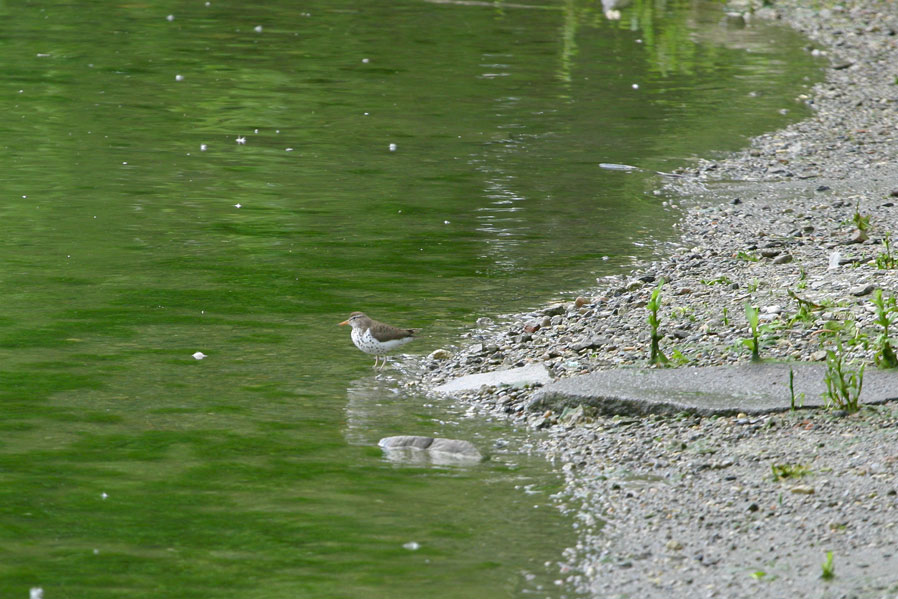A spotted sandpiper (Actitis macularia) wading at Ashbridge’s Bay last week. © BCP 2010
Weet, weet, weet. Weet, weet, weet…
I heard this little guy’s high-pitched whistle before I spotted him as I walked along the shore at Ashbridge’s Bay a few nights ago. (To hear an audio file of the sandpiper’s call — from the Cornell Lab of Ornithology —click here.)
The sun had almost set, and I was actually out to look for our swan pair, Penny and Tycho, and their two cygnets. I hadn’t seen them around for a few days and I was hoping nothing had happened to their babies. (P and T update: they’re still around in the Coatsworth Cut, mainly, with their two cygnets, which are growing incredibly fast!)
I foolishly (arrgh) was out for my evening ramble without my main camera — only had my point and shoot with me. Too bad, as I would have loved to get a much closer picture of this bird.
The spotted sandpiper, I understand, is the most widespread and best-known sandpiper in North America. (And unofficially, of course, easily the cutest.)
At any rate, I hope I to see this spotted sandpiper (Actitis macularia) again soon. When I have my long lens.
By the by….Does anyone know what the gloppy green gunk is that this little sandpiper is wading in? Is it an algal bloom? If so, is it harmful in these amounts? And if so, is there anything that can be done about it? Can anyone shed some light on this?
© BCP 2010




1 comment